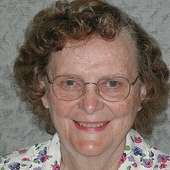Remembering Shank's Mare travels
When we think of different ways we have traveled in our lifetime we often neglect to remember the travels we did on foot. Physical fitness experts now push the benefits of walking for health. They suggest going to a gym to walk the suggested miles. Or some are eager to sell us walking machines so we can get our exercise without going anywhere.
We dutifully hop in our cars and drive to the gym or fitness center to improve our health. In the cities we see dozens of mall walkers, especially in the early morning before the stores are open. These are people who drive to a mall and walk the halls and aisles, sometimes in pairs, until they get in their required mileage. Maybe one of the times they are at the mall they will stop in a sports store and buy a walking machine to use on poor driving days.
We, who are middle age plus, join some of these that I have described. However we also remember when we didn't need to drive some distance in order to get our exercise.
Most of us walked to school, at least in our grade school days. My walk was a mile long in suburban Washington, D.C. I stopped at a friend's house part way to school and we walked together the last three quarters of a mile. We had alleyways, empty lots and neighbors' lawns that we used to cut time or distance, or to add variety to our walk. In Junior High, I was again one mile from school and my route, with a different friend this time, brought us into the back of the school through the athletic field. My high school route was slightly shorter, but it was uphill all the way. (But it was an easy walk coming home!) Walking to school was expected of all of the students, unless we roller-skated instead. There was a city bus we could have taken but unless it was pouring rain or bitter cold we didn't use our three-cent bus ticket.
My older siblings also walked to school here in Vernon County. To get to Pleasant Ridge School they first walked through the Eaton's pasture, joined forces with Harold and Mildred Eaton and then walked down the Katy railroad track until they were near the school. Then they cut through a field and entered the playground, out near the outhouses.
Using the outhouses, either at home or at school, also added mileage each day. Most outhouses were some distance from the main structure for obvious reasons. In weather like we are having this week, I imagine most people didn't walk to the outhouses, but jogged quickly.
My mother and her friends actually walked to their club meetings, even in snowy weather. It was easier to walk than to drive the early cars over muddy or snowy roads. It was also easier than hitching up the horses and using a wagon or buggy. Some of her notes mention walking about two miles to a friend's home for a meeting. These social and educational times were cherished and a little walk to get there wasn't considered a hardship.
Early fieldwork was often done by walking behind a plow, walking to sow seeds, or walking down cornrows to harvest the crop. Picking blackberries, gardening, gathering the eggs, going after the cows at milking time, were other regular chores that kept us on our feet.
Its no wonder obesity wasn't a problem in our youth.
I intend to begin a regular walking schedule as soon as the weather gets a bit warmer. I think I'll drive over to our daughter's house to see if she would like to join me.

